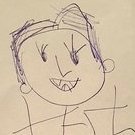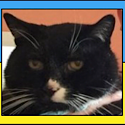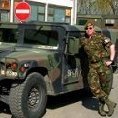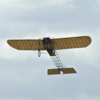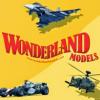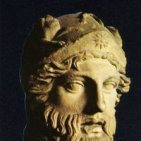Search the Community
Showing results for tags 'artillery'.
-
Hello folks, Finally finished this one. It was my most challenging build so far, and I must say I am happy I can call it done. The model should represent an early version of the AEC Matador, used as an artillery tractor, towing a 6-inch Howitzer. It's based on a reference photo taken in February 1941, near Giovanni Berta, Lybia. It probably belonged to the 234th Battery, 68th Medium Regiment, HQ Middle East Command. However, at the time the photo was taken, the battery was temporarily attached to the 64th or 7th Medium Regiment under the XIII Corps, while the rest of the 68th was deployed in Sudan. It was taken during the opening stages of Operation Sonnenblume in some godforsaken place in Libya. Having no experience with artillery units it took me quite some time to figure out the unit, marking, etc. More info here. AEC Matador kit is AFV Club No. AF35236. I can say the same about all the AFV kits I built so far. They are all very quirky, but they can be built into nice-looking models, and there's always some amount of frustration involved. Instruction errors, and fit issues (which vary from perfect fit to no fit at all on the same model), are usually over-engineered... However, the details are generally fantastic. This kit had all of that and more. On top of everything, the plastic was a bit brittle, which combined with fiddly parts meant a lot of time spent on fixing broken parts. Despite all the issues, it is still a great kit, and I can recommend it. The 6-inch howitzer is a resin kit from Resicast. Never built a resin kit before, so it was a challenge of its own. But the kit is relatively simple so I think it's a good choice for a first resin kit. Here's the model: Only the wheels were replaced with the AM Panzer Art resin version. The wheels included in this kit are vinyl ones, which I hate. I was considering scratch-building all canvas sheets, but in the end, I only replaced rolled sheets and kept the plastic version for the rest. The reason for this is that I had to mask the Caunter camo, and I am quite sure that paper canvas sheets wouldn't survive this. The plastic sheets included in this kit are almost completely flat, which is a pity because everything else is super detailed. So it will be something left to be desired. The rolled canvas and canvas cover used on the howitzer are made of paper using a VMS paper shaper. The camouflage net was made from medical gauze, impregnated with paper shaper as well. This was my first try to do a vegetation. The result could be better, but it is what it is. It's made from Green Stuff World Seafoam trees and leaf litter. Decals are coming from 3 different sets. I was struggling a lot to make the model fit isometric photos. The model is painted mainly with MRP paints, although I used Real Colors for canvas (cause it's easier to do chipping), and Vallejo, Gunze, and Hataka for brush and detail painting. Masking it for Caunter camo was a project itself. Including an incident in the middle of painting when I dropped the model and spent a few days fixing it I did just some basic weathering with washes and pigments. And here are some detail shots. And the reference photo I used. Overall, this was an adventure. Cheers, Nenad
-
PzH 2000 - 1/24 Scale - Scratchbuilt I present my recently completed model of a Panzerhaubitze 2000 self propelled howitzer in Ukrainian armed forces service. Originally my intent was to paint this model as a german gun in Afghanistan, but very unfortunately about half way through this build, the war in Ukraine escalated dramatically. As a consequence several of these extraordinary weapons have been dispatched to the conflict and I have changed the markings to represent one of these as it may appear today. This project ran for over three years and, by my very rough reckoning, has absorbed at least 300 hours of my time. The model is completely scratchbuilt using a wide variety of materials including, wood, MDF, plastic-sheet, brass, poured-resin, aluminium lithoplate, a few dabs of filler and - very occasionally - bits and pieces scavenged from injection molded kits. No 3D printing was used. The last photo is intended to show the size of the finished item. It’s a fairly large model. The whole WIP story is documented here: Building models this way is always a learning process. For me the chief lessons learned were: How to scratchbuild tracks; which is actually not too bad once you know how. MDF is a really useful material, especially when skinned with plastic-sheet or aluminium lithoplate. Acrylic laquer paints are really very good. In this case I've used SMS paints and am definitely a convert. Figures can be scratchbuilt, although not easily. Magnets can be used to hold movable parts steady when required. In this case once the gun's elevation is set it's held in place by a couple of strong magnets inside the turret. There are some really good modern glues out there including Selly’s Powergrip and Gyprock’s blue acrylic joist paste. Careful attention to precise and accurate measurement at every stage really pays dividends. A good set of digital calipers are an indispensable tool. That's it for this project. Sincere thanks to all that have shown interest in this, especially anyone who has commented or posted 'likes'. As always, without the support of the Britmodeller community I don't know that I would have completed this. I hope to see you soon on the maritime pages as the SS Xantho gets yet another KUTA! Very Best Regards, Bandsaw Steve
- 29 replies
-
- 42
-

-
- Artillery
- Scratchbuilt
-
(and 1 more)
Tagged with:
-

MiniArt 7.5cm PaK40 Ammo Boxes with Shells Set 2 (35402) 1:35
Mike posted a topic in Diorama & Accessory
7.5cm PaK40 Ammo Boxes with Shells Set 2 (35402) 1:35 MiniArt via Creative Models Ltd We reviewed MiniArt’s fabulous new Pak.40 75mm Anti-Tank Gun here, and it contained a few sprues of shells and boxes to scatter some ready rounds nearby, but you can always use more if you plan on depicting a well-stocked battery that’s prepared for a long battle, and this is the second set we’ve had in, with different containers and shell type. This set includes seven sprues, two box sprues, two canister sprues, two shell sprues that are the same as in the PaK40 kit, and one spent shell casing sprue that have hollow necks, as do the canisters, thanks to some slide moulding magic. It also includes a sheet of decals to stencil the shells and their containers once they’re painted and before you begin the weathering process. A set of twenty ready rounds are included, with another four empty brass casings, plus four light-weight planked boxes that have slots for three shells each, and are made from individual perforated upper and lower, solid sides, ends, plus handles, and can be posed open or closed if you wish, although with these you will need to place shells inside if you expect your audience to believe they are full, as the contents can be seen through the slots, even when closed. The two sprues of cylindrical wicker single shell cases have separate caps and fluted sides for strength, which have an open end if you want to display them discarded after use with their lids open. Markings The back of the box has instructions, sprue diagrams and colour information printed on it, including a chart that gives codes for Vallejo, Mr Color, AK Real Color, Mission Models, AMMO, Tamiya, as well as colour swatches and generic colour names. Decals are by Cartograf, which is a guarantee of good registration, sharpness and colour density, with a thin matt carrier film cut close to the printed areas. Conclusion If you have a PaK.40 from any manufacturer at this scale in the stash already, or intend to get one (which should be the MiniArt kit – it’s gorgeous), this set will add a healthy stack of shells in super detail with all the stencils you could need to complete the task to the best of your ability, along with some of the more unusual metal cases to provide some individuality. Highly recommended. Review sample courtesy of -
Panzerhaubitzer 2000 - Pzh 2000 in the 1980s the German, Italian and British governments attempted to develop, in collaboration, the next generation of NATO self-propelled Artillery. For various reasons that project failed. Britain pressed on and successfully developed the AS-90 while the Germans pursued their own project which combined the expertise of leading German companies, Wegmann, Krauss-Maffei and Rheinmetall to produce the truly awesome Panzerhaubitze 2000. In the 1990's this was arguably the best Self Propelled Gun in the world and it remains a cutting-edge weapon to this day. Today it is used by several NATO nations including; Germany, Holland, Italy, Greece, Lithuania, Croatia and Hungary. The Pzh 2000 features an extremely long - 52 calibre - 155mm gun with a largely automated gun-loading mechanism for very high rates of fire to ranges in excess of 40km. The weapon's fire-control is among the most sophisticated in the world, and allows a single gun to be fired in 'multiple round, simultaneous impact' or MRSI mode. In this mode up to five shells can be fired, each with its own charge and trajectory in such a fashion that all five shells hit the same target at the same moment. The gun is also capable of firing GPS-guided precision rounds with a circular impact error of about 1.5m. The Pzh 2000 has seen a significant amount of action in Afghanistan where both Dutch and German examples have been used to provide fire-support to the International Security Assistance Force. This was the first time that the German Army has used artillery in combat since the end of WW2. One day while on my lunch break (long before all this COVID 19 business broke out) I was checking out a little-visited corner of the local gaming / model / bookshop and found this in among a pile of largely neglected publications. Upon opening the book I was greeted with this fold-out (and there are front and rear views on the flip side too). Now this might just be the most exciting centre-fold I've ever seen. In any case, a few minutes later the book was purchased. About a week later I had decided that this project was going ahead but that 1/35 just wasn't big enough. I took the book to my local printing / copying shop and got the drawings enlarged to 1/24 scale and copied 8 times. I got one 'master set' laminated. And now we are off... Let's scratchbuild one of these things! This is going to be an unusual build for me because much of the work will be done in plastic card, but I want a good solid wooden hull to work from so I'm starting with this block of 'Liquid Ambar' - a superb carving wood - which needs to be cut to the correct size. Here's the first cut of the entire project. Here's the interpreted curve on the leading edge of the hull being marked out... and here it is being carved to shape. Then rasped prior to a final filing and sanding smooth. OK - looks about right. Now I use the bandsaw to cut the wood to exactly the correct width for the hull. The bandsaw! Best tool in the shed! And following a bit of research (especially looking at photos) and some ‘interpretive’ carving and cutting at the rear of the hull I have this basic starting point. After two years of slaving away building a WW1 Biplane (an Avro 504 to be precise) I'm dead keen to work on this project which promises a complete change of subject and modelling method. I hope that some of you will follow along and see what comes of this little venture. Bandsaw Steve
- 482 replies
-
- 28
-

-
- Artillery
- Scratchbuild
-
(and 1 more)
Tagged with:
-
Probably my sole entry for the GB, as surprisingly I don’t have that many Japanese kits in the stash. I do have a few Tamiya kits that I might build depending on time, my other builds etc.
- 29 replies
-
- 10
-

-
German 7.5cm Anti-Tank Gun Pak40 Early Prod. (35394) 1:35 MiniArt via Creative Models Ltd As WWII loomed, the Nazi high command got wind of new tank developments in Soviet Russia, and realised that their 3.7cm Pak36 was inadequate for the task ahead, starting work initially on the 5cm Pak38, which was abandoned in favour of a 7.5cm barrel once the rumours were confirmed. It was essentially a re-engineered Pak38, with everything enlarged to suit the bigger rounds, in development between 1939 and 41, with the name Pak40 given to it during its gestation. As Operation Barbarossa began, the project was given a higher priority, and early examples reached the Eastern Front in late 1941, becoming the Wehrmacht’s standard artillery piece from then on, with a total of over 23,000 built before the end of WWII. The success of the weapon was such that it was also re-developed into a main gun for use by tanks and other armoured vehicles, such as the StuG III and Panzer IV, as well as a relatively makeshift mount on the Marder series of self-propelled guns. It was an effective artillery piece, capable of penetrating the armour of everything the Allies fielded, from the Sherman to the Pershing in US service, and the IS heavy tanks that the Soviets operated. It was a heavy piece however, and that affected its mobility, particularly in bad weather where it was prone to bogging down in muddy terrain. It shared projectile with all German 7.5cm rounds, but was mounted in a larger brass cartridge casing that gave it more power and range than the smaller rounds fired by the KwK variant use in the armour installations. Other variations included the driver bands around the projectile and the method of initiating firing, using traditional percussion caps for the Pak40, and an electrical mechanism for the KwK. Three types of round were able to be used, an armour-piercing explosive round, an armour-piercing kinetic penetrator with a tungsten core, and the standard HEAT or High Explosive Anti-Tank round, each of which differed in shape and colour of the projectile, and were marked with stencils accordingly. The Kit This a new tool from MiniArt, who seem to have recovered well from their production hiatus that began in February 2022. The kit arrives in a modest top-opening box, and inside are ten sprues of various sizes in medium grey styrene, a cardboard envelope that contains a sheet of Photo-Etch (PE) and the decals, plus a glossy-covered instruction booklet with colour profiles printed on front and rear covers. Detail is exactly what we’ve come to expect from MiniArt, and is excellent throughout, and with options to pose the model in transport mode or ready for action. You also get a few shells and wooden cases to dot around the gun if you intend to place it in a diorama. Construction begins with the chassis of the gun, on which the wheels and trails are installed, fixing many parts on it, adding brakes to the axles and a front fender, then cutting some lengths of wire from your own stock to link the brake cylinder to the pistons, with PE tie-downs holding them to the underside, and additional scrap diagrams showing the completed loom to help you with location. The trails are detailed with tools, grab-handles and spades at the rear, plus additional parts that differ depending on whether you are opening them up for combat, or ready for transport. They are mated to the chassis and locked in place by the top pivots, again changing some parts and their positions depending on the option you have chosen. A choice of two methods of attaching a shovel to the bottom plate are offered, one using a simple pair of PE clasps, the other creating a fully articulated retention clamp for the handle. The finished plate is fitted vertically for transport, but tipped up horizontally for action. There are actually three configurations for the gun, the traditional ready-for-action pose with the trails spread, plus two transport options, one for towing by a vehicle, the other for moving the gun off-road with a third wheel perched behind the trails, raising them off the ground for manual fine-tuning of position by the crew. The trails have a pair of cross-braces to hold them together during towing, with a split towing bar made from two halves connecting it to your choice of prime-mover. The wheels are laminated from three layers plus a central boss, making up two of these and a third without the boss that sits across the trails for the vehicle transport option, held in place on a sturdy bracket. For the manual transport option, the bracket is reused and fixed to the towing arm from underneath with the third wheel attached on an axle to raise the trails above the ground. The gun barrel is a single part with a keyed peg on each end, the thicker end inserting into the eight-part breech, which includes a sliding block if you leave it unglued. The barrel slide is made up from three sides and an end-cap, adding more details on the sides, and a cover on the front portion made from three sections. The barrel drops over the slide with the addition of a small PE crutch and is surrounded by a pair of pivots to the sides, the elevation arc-gear under the slide, and a few other detail parts, popping the pivots into the trunnions that glue to a detailed bottom plate, holding the gun in position from there. Dampers with corrugated gaiters are attached to the trunnions, with different parts for transport and combat positions, then the adjustment wheels and their actuators are fixed onto the left side, with a stubby axe on the right, again with PE socket and clasp on the handle. The sighting gear is also installed on the left, then it’s time to protect the crew from incoming fire. A U-shaped armour panel is built from two layers of styrene with a PE layer in between them, slotting it over the barrel from above and mounting on four supports, adding an additional link on each side using scrap diagrams to locate them properly. The cheek armour panels are also two layers per side, with cylindrical stowage items including a torch to the inner face before they are mated with the centre armour and braced by additional links to the sides of the trunnions, with an angled PE lip on the inside just below the top edge. There are three choices of muzzle-brake, each one made from similar but slightly different shaped parts, plus an optional part that is covered with a bag and PE ring to prevent debris ingress. The gun is then lowered onto the chassis, locating the pin in a corresponding hole in the top. To add detail around your model, a set of ten ready rounds are included on a sprue, with another four empty brass casings on another, plus a pair of shell boxes that have slots for three shells each, and are made from individual sides, bottom and lid plus handles, and can be posed open or closed if you wish. Stencils for the shells and boxes are included, as well as a full painting guide next to the colour chart that gives codes for Vallejo, Mr Color, AK Real Color, Mission Models, AMMO, Tamiya, as well as swatches and generic colour names. Markings There are a generous six options included on the glossy pages of the instruction booklet, with a number of different colour schemes relating to their service location. From the box you can build one of the following: Infanterie-Division, Heeresgruppe ‘Süd’ Eastern Front, 1942 Armée, Heeresgruppe ‘Don’, Stalingrad, late 1942 Deutches Afrikakorps, North Africa 1942-43 camouflaged with mud Deutches Afrikakorps, North Africa 1942-43 Unknown unit, Eastern Front, Winter 1942-3 Unknown unit, Eastern Front, Winter 1943 Note that the paint options have been rearranged on the profiles and list for tidiness’s sake. Options D and E are the opposite way around on the kit instruction sheet. Decals are by Cartograf, which is a guarantee of good registration, sharpness and colour density, with a thin matt carrier film cut close to the printed areas. Conclusion This is a incredibly well-detailed kit of an important German artillery piece that ruined many an Allied tanker’s day, with full options for transport and combat. All it needs now is a crew. Very highly recommended. Review sample courtesy of
-
15cm Nebelwerfer 41/3.7cm PaK36 Wheels (B72107 for Special Hobby) 1:72 CMK Blitz Line by Special Hobby Kit wheels are generally in two halves, which means you have the resultant joins to deal with, possible mould-slip issues on single part wheels, and sometimes less than stellar detail due to the moulding limitations of styrene injection technology, especially in the tread department. That's where replacement resin wheels come in, with their lack of seamline and superior detail making a compelling argument. They are also usually available at a reasonable price, and can be an easy introduction to aftermarket and resin handling, as they are usually a drop-in replacement. This set is intended to replace the kit wheels of the Special Hobby Nebelwerfer (SA72026), which shared wheels with the PaK 36 3.7cm anti-tank gun (SA72024), so could be used for either. For both of these kits, the wheels are in two halves, having a single layer hub on the outer part, and double thickness for the tyres. These resin wheels are drop-in replacements for the kit parts, and once cut from their casting blocks slide onto the ends of the axles on each side of the weapon. They bring additional fine detail to the hubs, but the main improvement is to the tyres, which have much finer shoulders blocks on the edge of the contact patch, Dunlop logos on the side walls, and circumferential grooves in the centre of the contact surface, adding substantial realism as a result. With resin, you should take the precaution of wearing a mask when cutting or sanding it, as the tiny particles are harmful to your health if breathed in. Washing the parts in warm water will also improve the adhesion of paint, as there may still be some moulding release agent on the parts when you receive them. Take care not to use water that is too hot, as this may cause deformation to more delicate parts, and this technique can conversely be used to fix warped parts, using cold water to “freeze” the changes in the parts. Highly recommended. Review sample courtesy of
-
I haven't posted in this forum before, I normally build aircraft. My modelling bits are in the container in the driveway, in the shed or out in the rain under a verandah and who knows for how long. I have managed to find some tools and have started this kit on the kitchen table, not an ideal place. Anyhow some images. Box art Sprues X 2 except for the gun trails PE and decals I have started to build this kit and some pics will follow. Thanks for looking Stephen
-
For a Dutch FB GB I decided to build a not often seen kit: Soar Arts' German 35,5cm M1 Super Heavy Howitzer (also posted in the Arty section). Yet I decided, this also needs a complementary (albeit skeleton) crew an ammo delivery truck and ofcourse a dio. Here are the results:
- 16 replies
-
- 33
-

-
Hi all, I used to model a ton as a kid. It's a few decades on, and having decided to honour my Grandfather with accurate-as-can-be reproductions of his units in Tunisia & Italy, the last few weeks I have both learned more than I need to about markings, and learned that there's... quite a lot to accuracy in colours, it would seem ha. I've already been blessed to a personal response from Mike Starmer (a few days back into the hobby and I'm already getting an email from royalty!), which together with his published research has of course been invaluable. But I wanted to throw out there what I have, for your comment regarding accuracy, and to solicit opinions on possible paint/colouring/location scenarios - and to share some pics. I've done a ton of research, I just want to get these final details across the finish line. And unfortunately I can't ask Granddad any more. Model 1: Quad tractor & 25 pounder 140th Field Regiment, Royal Artillery. 504 battery, C troop, Tunisia Jan-May 1943. (1st Army, 2nd AGRA). Markings - AoS: RA red/blue with white bar under, number 202. Formation - 2 AGRA had the same as 1st Army, shield with sword on George cross. Battery red/blue square with red in 2nd position, troop/gun marking "C1". They shipped from the UK to Tunisia via Algeria in early Jan 1943. Mike surmised that they most likely had the UK camouflage (SCC 2 + 1a), having shipped from the UK. But I'd like to throw a couple of details and possible theory out there, and some black & white photos. First, they newly camouflage painted their equipment immediately before shipping out. Second, apparently the equipment was sunk on the way out and they reequipped (with new vehicles & guns) from a depot in North Africa before going into action. Third, I have photos from their sister battery's Bishops that deployed together with them, and this doesn't smell like SCC2 + 1a to me. So my question of you experts is, is it realistic that rather than SCC2 +1a UK colours, they might have either immediately before sailing or in-theatre, used MEGO 1650 colours (Desert Pink ZI with disruptive, I'd guess given the area and photos, Dark Olive Green)? Model 2: Scammel Pioneer R100 & 7.2" Howitzer Subsequent to their action in Tunisia, in September 1943 (still in-theatre), 504 battery transferred to 75th (Highland) Heavy Regiment, and was reequipped with 7.2" Howitzers & Scammell Pioneer R100s. While the rest of 75th Heavy took part in Sicily and on up, 504 bty did not join the rest of 75th Heavy until Mar 1943, sailing from Algeria to Naples. (8th Army, 6 AGRA). What I am confident they were NOT painted: SCC 15 base was too late (12 Apr 1944, they were already in action). It's possible that per Mike's "By 1944 European colours and schemes predominated" they were SCC2 base, and from the photos I've seen, likely SCC 14 disruptive. But Mike also adds "In Italy, many vehicles used home schemes... but others showed the remnants of their final North African schemes or the new Middle East scheme which used a basic colour of Light Mud [SCC 5] with bold specified patterns of black [SCC 14] or dark olive green [similar to but not SCC7]". Given that they have a new regiment and spanking new equipment in theatre, just a couple of months after that new ME directive is issued, I'm quite sure they'd have a SCC 5 base at least at first. But the question is, what's the likelihood that they might have repainted to the European colours (SCC 2 base) before deploying to Italy from Africa 6 months later, Mar 1944? Photos I have seen suggest likely SCC 14 disruptive in either case. (Markings: AoS red/blue/white bar beneath, number 204. Formation - 6 AGRA had the 6th zodiac symbol, like a gothic M, white on black. Battery marking blue with red in 4th position, still awaiting some info on the troop). The 7.2" photos are from later in Italy, after Sept 1944, so may not be indicative of the Mar-Aug period I wish to capture. Please excuse my pedantry, but I'm sure you understand and it would seem I'm among good company! So any theories on the likely colourings, given these scenarios, would be appreciated. I hope this might foster a possible lively discussion! Else maybe I'm just being ignorant - but in any case, I appreciate your input. And an aside - a couple of these markings I am going to have to make, at the very least the 6 AGRA formation marking. It's occurred to me that I might be able to print to teslin with my inkjet, a waterproof paper substitute I use for printing maps. Has anybody had any luck with anything like this? I'd also like to express my appreciation for all of your discussion on the accuracy of books and especially the actual paints from various suppliers. Based on all this I have stayed away from... most of the suppliers of the SCC and other colours, and just ordered Sovereign Hobbies Colourcoats (I'm sure you purists would have me mix Mike's mixes, but I have to draw a line somewhere). Thanks very much. I'd also like to share this, which I have contributed to and from where a lot of my research came. The battle of Cassel, rear-guard for Dunkirk, was an overlooked and significant event http://140th-field-regiment-ra-1940.co.uk/ (I may make Granddad's 18-pdr next - he was one of the very few from 367 bty who got away). Ah - I just noticed there's no upload - I have the Bishop and 7.2" photos from his actual unit, here: https://www.dropbox.com/sh/b77syeh11yeuyca/AAC_WWJiGL6HKJPy_T8l6Dvma?dl=0
-
Hi my dear fellows, For a Dutch FB GB I decided to build a not often seen kit: Soar Arts' German 35,5cm M1 Super Heavy Howitzer (also posted in the Arty section). Yet I decided, this also needs a complementary (albeit skeleton) crew an ammo delivery truck and ofcourse a dio. My progress thus far: Gun: ready: After messing around with some foam board And grass and modelling paste for model railroading the base progresses nicely too... Then I started on the figs: Cleanup an assembly is rather straightforward. Then I started painting faces (all in Vallejo Model Color) Step one: a base color of sand: Next: Adding shadows, a mix of beige red and black red Step 3: First highlights, with beige red Step 4:Second highlights with base flesh Step 5: Final highlights with light flesh Please do note that the hands get the same treatment Step 6: Adding the eyes. Whites with white and a tad of sky blue, black irises /pupils. Step 7: Lips painted, with a mixture of beige red and burned red Step 8: Chin strap, black Step 9: Eyebrows, color depends on hair color The whole bunch finished. Next up: painting the uniforms, waiting for the truck to arrive (on order), finish the dio and fixing some details...
- 19 replies
-
- 10
-

-
After some building, I finished Soar Arts' M1 35,3cm Heavy German Howitzer in 1:35. A pleasure to build, with great fit (just a bit tight at times) and some fiddly bits (not to build, but to handle after finishing it: ie railings and ladders) . Now it is ready to build a diorama around it... Missing the materials for the scenery, but more importantly, the figures I have in mind, and a truck.
-
I first did one of these with the old Dragon kit back in the nineties - back then you couldn’t get anything at all about the Scud as they were still on the old soviet secret list. However 25 years later and things have changed, I’ve had a hankering to return back to this subject and about a month ago I saw the far superior Trumpeter version on eBay for £66.00 inclusive of postage from a Chinese eBayer and a month later it was duly delivered. The box itself is fairly large and weighs quite a bit and is packed with plastic - the legend on the box says that it contains in excess of 1,330 parts and is 38.4 cm long and just over 9 cm wide - this is going to be a complex build project out-of- the-box but I’m also going to add the Voyager Models internal and external multimedia detail sets (35738 and 35737 respectively) as well as the Voyager Model Line Pipe set (PEA 356) and the DEF Model MAZ-543 sagged wheel set. Paints will be primarily Ammo-MIG acrylics with the AK 4BO Russian green modulation set (AK 553) and the tyres will be weathered with the MIG Tyres and Tracks Weathering Set (A.MIG 7105) Now then, on with the build.
-
A relative recently gifted me an Airfix 1/32 17 pounder kit. Over Diwali I decided to do a full speed build of it. Sorry that there are no photos of the WIP, but my camera's SD card got corrupted. Many thanks to Tim (@Tank152) for the various items he sent me that greatly helped while building. I will weather the kit when I am home for winter vacations in December. Please give any advice that you fell will help improve the kit.
-
There’s reams of info and advice regarding chipping, dust, rust, mud, general wear etc but I can’t find anything about what sensible weathering at the muzzle brake should be. Most people use a black soot pigment which is not really right because the combustion products of nitro cellulose based propellants are a dirty brown colour or grey. Moreover the vented flame will burn off any paint and leave what, steel colour, rusted steel, blackened paint residue or something else?. Any comments appreciated
-
Reposting due to problems with the photo's uploading on my last attempt so here we go again., hopefully with some photo's this time? This is the Trumpeter 155mm AS-90 with a few added extra's Photo Etch set Metal barrel with sagged recoil sleeve Scratch built cam nets and poles Accurate Armour GPMG (The kit one is a horrendous attempt at a gimpy) Accurate Armour GMPG ammo boxes Lights & indicator lens purchased as self adhesive gems from a craft shop A great kit and as an Ex-Gunner I couldn't help a pic next to my last 155mm build, one of the guns the AS-90 thankfully replaced an FH-70. Hope you enjoy.
- 23 replies
-
- 22
-

-
(I guess this is as good of a choice for "first post" as any other idea I might have had...) Greetings all, I had thought I remembered seeing an article years ago where someone had built the Sovereign 2000 2-pounder gun in a Caunter scheme pattern. But I went through my database of references, and I only have one article of someone doing that kit; Steve Zaloga built it in a 2002 Military Modelling issue. And, alas, he did his in a straightforward desert tan scheme. Did I just imagine having seen this at all? None of my Google-fu has been able to turn up any photos of the gun in that scheme. I'd love to do it, for something kind of different than my usually artillery projects. But I prefer to feel at least a little certain that it's legitimate! Thanks in advance for any help/advice... -Randy
-
-
We, in the west, can, perhaps, be forgiven for forgetting that the horse was significant factor in WWII. The British army started mechanisation of their cavalry regiments in 1928, and only two regular cavalry regiments retained their horses following the outbreak of WWII. German, and to a lesser extent, Russian propaganda promoted their modern, mechanised, image over the antiquated quadruped, Ever since playing Avalon Hill's PanzerBlitz (a long time ago), I've been aware that both the German and Russian armies used vast numbers of horses in WWII. So, when I learned of this kit, I wanted to have a go ... The crew, as supplied, have a mix of Mosin-Nagant rifles, carbines, and PPSh41 sub-machine-guns. Some online reviews suggest that the PPSh41 is is wrong for artillery. Googling around, I have found some individual artillery crew members with a PPSG41, but they are unusual in photos. Anyway, I've supplemented the set with one of these: The sniper rifles can be built as 'ordinary' pieces. I'm not over keen on the horse positions - yes, I can build four distinct positions OOB, but the leg positions are still very similar. I'll have a think about options... The required photo of box contents: At the back you can see the packet of infantry weapons. MiniArt are very good at showing the parts for their kits, you can see the individual sprues here: http://miniart-models.com/index.htm?/35045.htm The illustration and instructions are for the 75mm ZiS-3 (or 76.2mm). Also present are parts the 57mm ZiS-2 which was considered too powerful early in the war, but, apparently, returned to favour following the appearance of Panther and Tiger tanks. {edit} P.S. I haven't forgotten m cossacks {/edit}
-
It seems that AS-90's are like busses. You don't see one for ages then two come long at once (ukmodllers on Sunday). Added extras include: a seriously fiddly photo etch set metal barrel and drooped recoil sleeve. Accurate armour GPMG (the kit one is horrendous) Accurate armour GPMG ammo boxes I also found some rather useful stick on glass studs in a craft shop which I used for the head lights, indicators and brake light lens I also added a few stowed items including the cam nets, cam poles and an air identification panel more to add a splash of colour, lets call it an Orange Forces gun sub somewhere on Salisbury Plain? It's a good kit which I have made before many years ago. I couldn't help a cheeky pic next to the Hobby Fan 155mm FH-70 just to show the old and the new. I'm a bit biased as I served on the FH-70 which was a dreadful beast to work, nowhere near as civilised as it's younger brother! Anyway hope you enjoy. https://www.dropbox.com/s/4cninwfs8buepbo/20170217_124255.jpg?dl=0 https://www.dropbox.com/s/k4moatd12k931ft/20170217_123538.jpg?dl=0 https://www.dropbox.com/s/puwwrh0n72iqs6x/20170217_123625.jpg?dl=0 https://www.dropbox.com/s/s889xiqdyy5w0ni/20170217_123656.jpg?dl=0 https://www.dropbox.com/s/zgoj1m3z52ebcdv/20170217_112220.jpg?dl=0 https://www.dropbox.com/s/hkl37eo05n2cjnn/20170217_123458.jpg?dl=0 https://www.dropbox.com/s/s889xiqdyy5w0ni/20170217_123656.jpg?dl=0 Please excuse the dropbox links but I can't get the photo's to up load to the site https://www.dropbox.com/sc/qv2djfgn2eir09v/AABJK8JD1nnvOXLXLffn_A3Aa
-
Hi All This is my fourth build since returning to kits after many years and I'm really enjoying it, very relaxing and therapeutic! Well this one is the Hobby Boss M4 High speed Tractor which I just fancied the look of to be honest. It was a great kit, excellent value with the included PE, chains, paint masks, colour chart etc. great value. This is my first play with PE, god it's fiddly isn't it! I still have a lot to learn with regards to weathering especially rust effects which I tried, binned and gave up un but practice makes perfect? Overall I'm reasonably happy for a fourth attempt. It was painted with a Tamiya rattle can and brushed Vallejo acrylics but have just invested in my first ever airbrush for future builds! Mainly OOB except for some spares box weapons and accessories. I scratch built the tarpaulins and weapon slings using thin lead sheet and bought a set of Verlinden 1/35 WW2 US maps and documents. Anyway I hope it's ok and thanks for looking!
- 13 replies
-
- 19
-

-
First post since introducing myself, so please be kind... I decided that artillery pieces must have fewer parts and be less complicated to build than tanks, but having assembled a few that has not necessarily prove to be the case. Some pics should appear with a bit of luck here. Not really up to speed with posting pictures so profuse apologies in advance if I've broken anything. Pics loaded from Postimage.
-
Ok so only my second posting in this section and my first attempt at a resin kit which was interesting! This has meant a lot to me as I served on these guns in the 1980's so it's something I've wanted to build for over 20 years but they're not cheap or easy to find. It was my first resin kit and came with some challenges the first being a badly warped barrel which in spite of several attempts couldn't be straightened so was replaced with an almost perfect section of plastic tube. I also managed to loose the whole breach block????? This resulted in my first foray in to scratch building which then led to putting right a number of inaccuracies and omissions in the kit including an air box and air lines, relocating the hydraulic compressors for the rear wheels, British side reflectors, a base plate drop mechanism and a return lever for the load assist assembly. It's not quite finished yet but I thought I'd post it now it's pretty much there. Next up is a diorama base to put it on and an accurate armour 155mm ammo pallet to go at the rear, shame they don't do a Foden 6x6 gun tractor to go with it. Sorry about the back drop but it's a big beast however I think it's an interesting subject but then I'm a bit biased, hope you like it? Edited to add a pic of a real one on exercise up in Otterburn, I'd forgotten quite how big they were!
-
Here I show you a fast assembly kit, as this Italeri Autocannone. I built it some time ago, but didn't photograph it until recently, when I got to the beach early and made pics without crowds and curious tourists! in it's ambient, it looks much better.... hope you like it. You can see more pics plus a review in my blog; http://toysoldierchest.blogspot.com/2013/07/italeri-autocannone-3-ro-with-9053-aa.html
-
- italeri
- autocannone
- (and 5 more)

